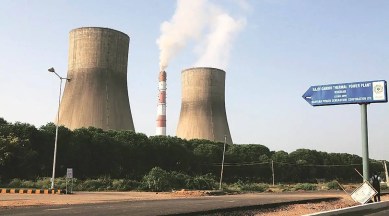Demand heat triggers outages: Low coal stocks disrupt supply
Power demand is expected to rise further as the Indian Meteorological Department has predicted normal to above normal maximum temperatures this summer.

Amid power outages in several states — including Punjab, Uttar Pradesh, Haryana, Maharashtra and Andhra Pradesh — caused by critically low coal stocks at majority of thermal power plants, electricity demand in the country is set to rise further. Total electricity crunch in India hit around 105 million units (MU) on Wednesday, with power supply shortage peaking at about 7,681 MW.
A spike in the international coal prices has led to a number of thermal power plants, which use imported coal, stopping supply, and thereby putting increasing pressure on domestic coal-fired plants. India has about 16.7 GW of imported coal-based thermal power generation capacity, of which around 6.7 GW is currently not operational, according to government data. The unavailability of sufficient railway rakes to transport domestic coal to thermal power plants has added to the issue, leading to 86 of 150 thermal plants, powered by domestic coal, having critically low levels of stock.
monthly limit of free stories.
with an Express account.
“Thermal power plants across the country are grappling with coal shortages, indicating a looming power crisis in the country,” the All India Power Engineers Federation said in a statement.
“Both demand- and supply-side factors are responsible,” economists at Nomura said in a research note on April 19. “Electricity demand has shot up, due to the reopening and as the country heads towards the peak summer season, but supply has been disrupted due to the reduced availability of railway rakes to transport coal and lower coal imports.”
Power demand is expected to rise further as the Indian Meteorological Department has predicted normal to above normal maximum temperatures this summer. The country’s peak demand crossed 200 GW in 2021. Coal-based thermal power accounts for about 75 per cent of India’s power supply.
Thermal power plants that use domestic coal had about 8 days of fuel on average, compared to normative stock levels of about 24 days. The government had aimed to boost coal inventories at thermal plants using domestic coal to 58 million tonnes by the end of March to avoid a repeat of the power crisis that occurred last October. However, such plants only had about 20.6 million tonnes of coal as of April 20. Experts note that an inability to build up stock prior to the monsoon season could lead to a prolonged crisis as supply of coal is reduced sharply during the rainy season.